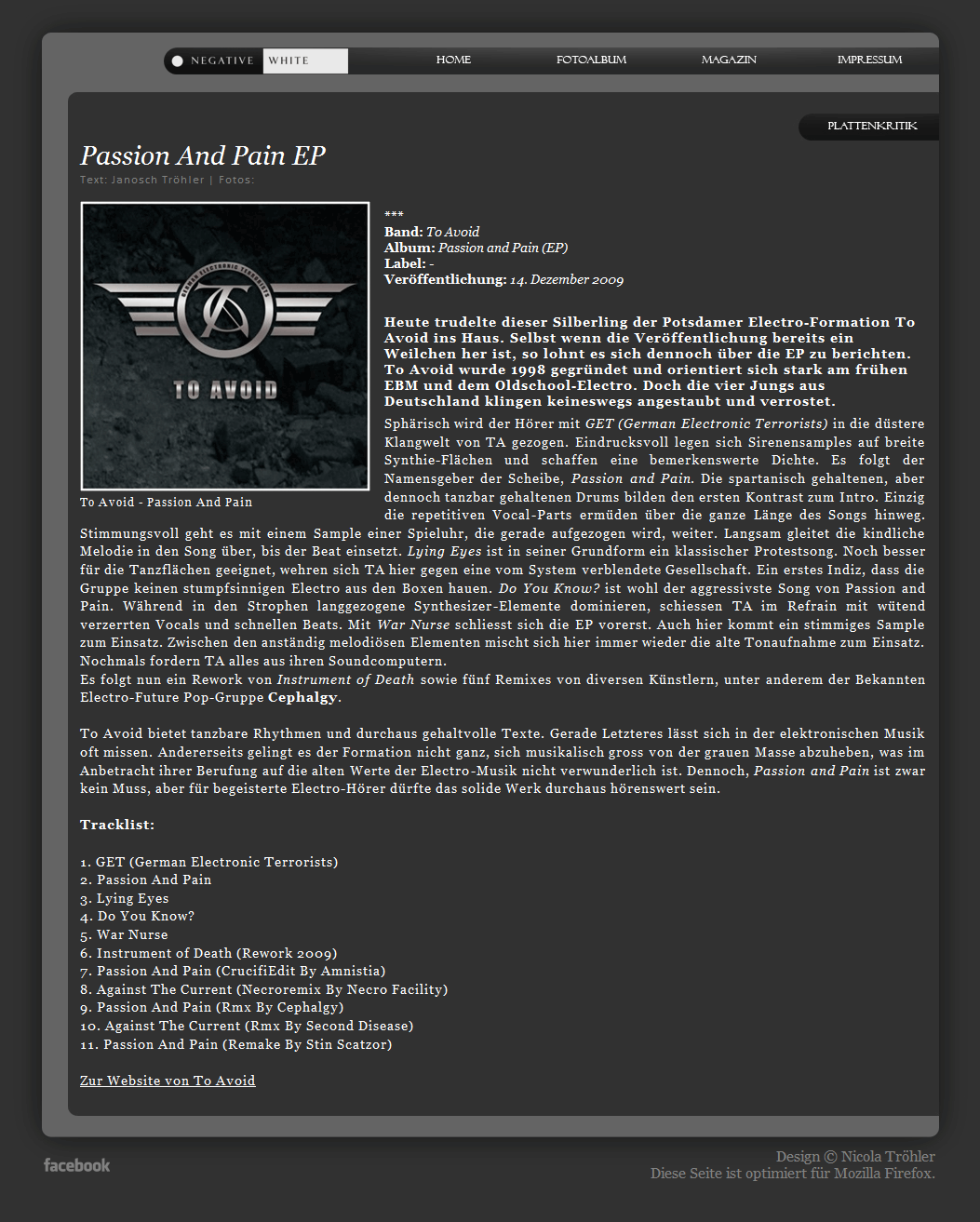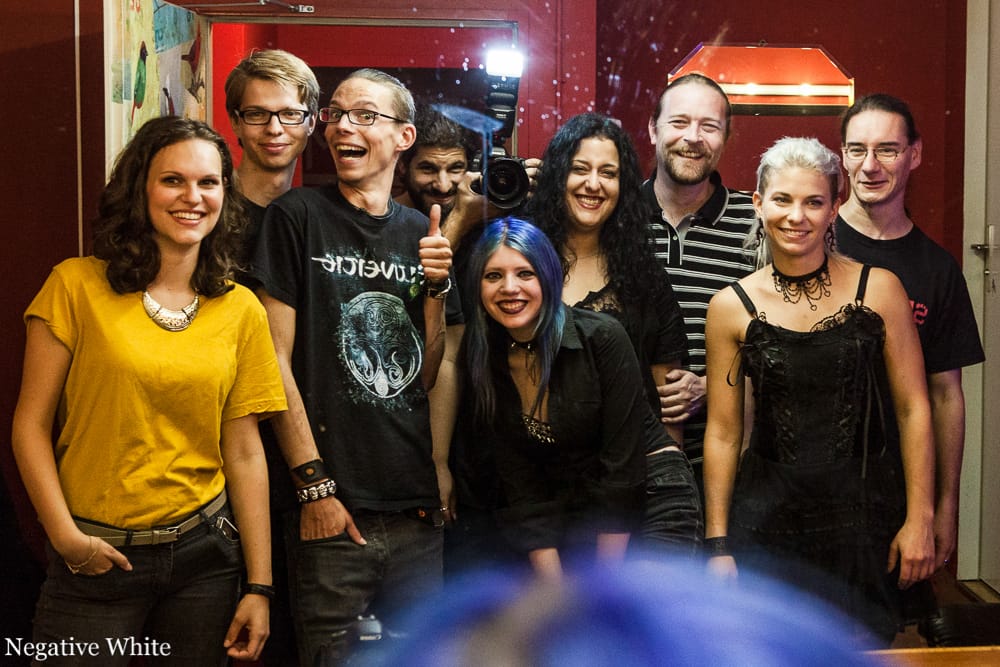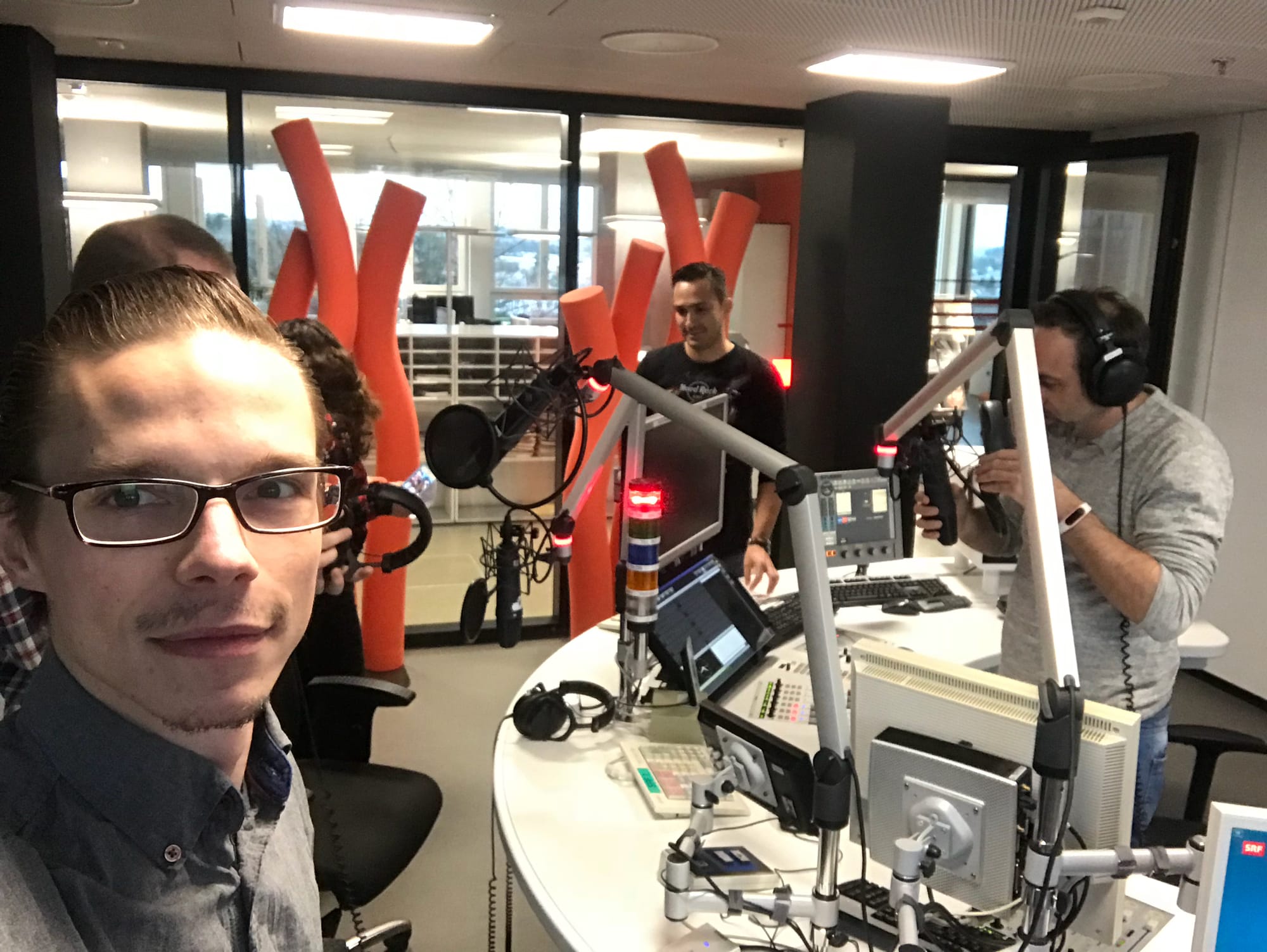Fifteen years ago, Negative White was born. It has been one of the very few things that remained a constant throughout almost half my life because music has, alongside writing, always been a source of inspiration and passion.
Thinking back to Negative White‘s early days and retelling the story feels very distant to today‘s reality of the internet, society, and music‘s place in the world.
I started writing about music sometime in 2008. Concert photographer Cornelius Fischer gave me the opportunity to pen short biographies of the artists he shot to accompany the galleries on his website.
He also organised my first-ever interview in 2009 for an online magazine called «ImScheinwerfer» with The Beauty of Gemina’s Michael Sele. And after his introduction, I wrote a couple of stories for «ARTNOIR», another Swiss webzine.
At the time, I was neck-deep in Zurich’s Goth scene, attending parties and concerts whenever I could. In hindsight, it was a late rebellious phase. And I paid the price because struggling at school and going out don’t pair well. I failed school, 18-years-old, no formal education, unemployed. But with one goal: Becoming a professional journalist.
The last piece of the puzzle was then my then-15-year-old brother Nicola. He got his first DSLR camera—determined to pick up concert photography. And he said to me: «Why don’t we start something on our own instead of working for others?»
Taking inspiration from the Goth saying, «White is just negative black», we came up with the name «Negative White»,—signifying our belonging to the subculture. And with a report from a concert by the Swiss band Spencer, it all started in 2010.

I’m not one for sticky nostalgia drip. In fact, a lot of what we did in the early days was far from anything considered quality. Our website, including the backend, was hand-coded entirely by my brother and his friend, who were IT apprentices at the time. It was a terrible mess.
There were no streaming services, no social media mollochs. We printed flyers to distribute and promote our endeavour. Often, I would still receive physical CDs to review.
And we had no plan, no business model, no goals. We were just happy doing something, and attending concerts for free wasn’t too bad, either.

But we persisted, and the team grew. At some point, Negative White had 30 volunteers contributing stories and photos—not only in Switzerland but in Germany, too. We branched out into lifestyle content and film. We even rented an office space at one point. People working for us went on to become professional photographers, radio hosts, and authors.
I used the platform to experiment and learn while studying journalism. Even when I eventually started in my first newsroom, Negative White continued. But after ten years of constantly motivating a team of volunteers, I felt burnt out. When COVID-19 engulfed the globe in 2020, I buried Negative White in a shallow grave after a decade.
When we started this experiment, we were just caught between the early blogosphere and the rise of social media influencers. The so-called «creator economy» was only distantly on the horizon. And it wasn’t as simple to get things started. Nowadays, the tools to create something like Negative White are as accessible as never before. Still, it feels more challenging than ever as a myriad of apps, content, and, honestly, noise fight for your attention.
And the same is true for musicians. Nowhere is this more obvious than Spotify Wrapped. Tens of thousands of minutes listened, but how active can that be? Often, and I count myself as well, we use music as mere background noise, devoid of deeper appreciation.
Despite the rapid digitisation, my teen experience of music remained viscerally analogue in some capacity. I went over to friends’ places with the sole purpose of listening to music. Today, this explicit intention sounds out of this world.
We live in a reality where more songs are published every day than in the entire year 1989—an incomprehensible amount that devalues music and makes it a ubiquitous commodity. And hell, there is something wrong here: We listen to more music than ever, and the people creating it earn not even pennies on the dollar.
Taking the risk of sounding like a boomer: The accessibility of tools to create and share music comes with a drawback. There’s so much slop and—let’s be real—garbage out there now—a problem only intensified by generative AI. But what people send me in hopes of getting featured is beyond any benevolent interpretation of quality.
Yes, the gatekeepers of old were a flawed and abusive system. But today’s uncontrollable flood of bad and mediocracy can’t be the answer either.

In all those years, I was never sure what so profoundly motivated me to write about music and invest thousands of hours into Negative White. But last autumn, I took a course in «Brand Strategy and Storytelling» and could nail it down to a single moment back in 2005:
My uncle, a deep-digging music nerd, handed me a stack of CDs to fill my iPod. The Who, Bob Dylan, Townes Van Zandt, Led Zeppelin, Sly & The Family Stone, and more. It was then music became something more to me: a way to express to the world who I was, feeling heard and emotionally recognised.
I have realised that what made this moment so significant wasn’t just the music but how it was shared: from human to human. This personal connection made the music so much more impactful and memorable.
Negative White is very much an extension and embodiment of my strive to create a shared experience and nurture people’s passion for music.
Gaining this clear understanding might seem insignificant from the outside. But after 15 years, I now look ahead with clarity, determination, and motivation to keep on writing, recommending, and fighting for my passion.





